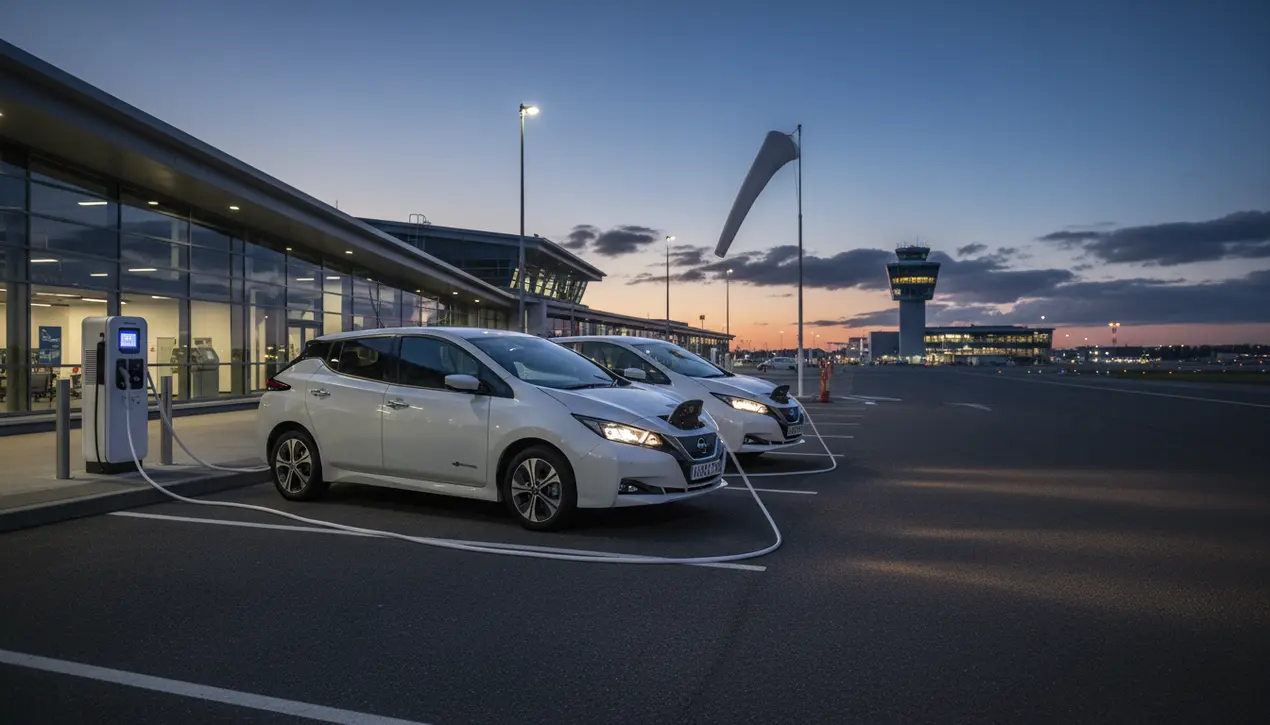
Otherauto & mobilityElectric Vehicles
Your Parked Car Could Be a Power Plant: How EVs Are Reinventing Airport Resilience
AN
Andrew Blake
2 hours ago7 min read1 comments
Forget the image of hulking backup generators as the sole guardians against power outages. A pioneering pilot program at a regional airport is proving that resilience can be found in a far more common and unassuming asset: the everyday electric vehicle.By harnessing two Nissan Leafs, the project demonstrates a fundamental shift in energy strategy, turning private cars into a decentralized, communal power source. The principle is straightforward yet revolutionary.During peak energy demand or, more critically, a grid failure, these electric vehicles can feed the electricity stored in their batteries back into the airport's microgrid. This capability can sustain essential operations—from air traffic control and security systems to terminal lighting—transforming the conversation around EVs from individual benefits like lower emissions to one of profound civic utility.The selection of the Nissan Leaf is strategic. As one of the earliest and most widely adopted mass-market EVs, it highlights the immense potential for scalability.The vision expands from two cars to hundreds or thousands, creating a vast, distributed network of batteries that could stabilize a city's power supply. This model directly challenges the fragility of traditional, centralized power systems, which are prone to single points of failure.An airport serves as an ideal testing ground. As energy-intensive hubs where operational continuity is non-negotiable, even a brief power loss can trigger nationwide travel disruptions and significant economic damage.By utilizing EVs, the airport taps into a resource that is already on-site, powered by renewable energy, and whose primary function as a vehicle remains fully intact. This is a smarter alternative to investing in expensive, single-purpose backup generators.According to Dr. Eleanor Vance, a smart-grid researcher at the University of Michigan, this represents a democratization of energy security.'For decades, resilience was managed by large utilities and industrial systems,' she notes. 'Now, that security can be crowdsourced from the community itself.' This approach is replicable for hospitals, data centers, and residential neighborhoods, weaving a more responsive and robust energy web. While challenges such as standardizing bi-directional charging technology and creating fair payment structures for car owners remain, the success of this small-scale initiative is a powerful signal. It points toward a future where your car is not just for commuting—it's a silent guardian in the parking lot, a vital node in the community's infrastructure, ready to restore power when it's needed most.
#V2G
#Nissan Leaf
#airport resilience
#electric vehicles
#energy management
#featured
Stay Informed. Act Smarter.
Get weekly highlights, major headlines, and expert insights — then put your knowledge to work in our live prediction markets.
Comments
Loading comments...
© 2025 Outpoll Service LTD. All rights reserved.